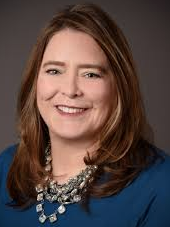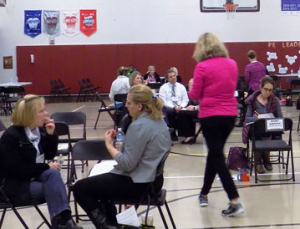Second of two parts
By Hannah Carver
NKyTribune reporter
In spite of a booming economy and a headline-worthy unemployment rate, many across Northern Kentucky are still left struggling, which is why we’ve delved into the issue of income inequality to take a closer look at why poverty prevails, and what’s being done to solve it.
In Northern Kentucky alone, they’re several agencies working to provide services to those in need. One commonality among those with great successes is the “bundling of services.”

Children, Inc. takes a multi-generational approach, providing a full array of direct services that help not only the child but also the parents. As part of this, they’ve changed their procedures.
Rather than just asking how a child is doing in terms of his or her development, Children, Inc. coaches ask parents what their hopes and dreams are for their child. Then, together, they come up with a family goal, a parent goal, and a child goal.
“That helps us identify barriers, so we can implement the best family-centered policies,” Children, Inc. CEO Shannon Starkey-Taylor said. “We want to help families strive for self-sufficiency.”
The organization has also adopted the motto of “cradle to career.”
“It’s a natural extension of our continuum,” Starkey-Taylor said.
In addition to offering early childcare services and before and after school care, through NavigoPrep, the group helps older students discover their interests and navigate realistic possibilities beyond high school.

Shannon Starkey-Taylor
“If you can bundle services for a family and not just help with getting a college scholarship, but also help with three or four things besides that, the success rates are great,” Tandy said.
The Lincoln Grant Scholar House is a prime example of bundling. It is home to 45 full-time college students, who are also single parents.
The initiative is built on the same model as Louisville’s Family Scholar House, which has a 96 percent graduation rate and has been operating since 2001. The goal is to provide the support necessary for residents to achieve post-secondary success. In turn, the parent’s success results in a far greater likelihood that the child will pursue a post-secondary degree – ending the cycle of poverty. Brighton Center’s Northern Kentucky Scholar House operates with a similar vision.
GROW NKY, or Growing Regional Outcomes through Workforce for Northern Kentucky, is another new initiative in the area. While its focus is on ensuring Northern Kentucky can attract future businesses and retain current ones as a result of a strategic workforce effort, among its five pillars are kindergarten readiness, college and career readiness, and adult career readiness and lifelong learning.

Brent Cooper
“What if every employer in Northern Kentucky had an apprentice, co-op or intern?” said Brent Cooper, president and CEO of the Northern Kentucky Chamber of Commerce. “We know statistically kids who gain that kind of experience during high school get better grades, are more likely to graduate, and are more likely to be hired after high school. That is just one of the outcomes we hope to ‘GROW’ through this effort.”
Another piece of the income inequality puzzle is what Tandy calls, “income insecurity” — when someone’s wages fluctuate, or that person is employed episodically, and the money is not there year-round to meet expenses. That insecurity ties right into inequality as it can become hard for people to balance their income and their needs.
Over the last three years, NKCAC has worked to expand its financial literacy and empowerment programs, Tandy said. As a commonwealth, Kentucky has decided this is important as well.
House Bill 132, which Gov. Matt Bevin signed into law in April, requires that a financial literacy course be a high school graduation requirement. The goal: ensure that every Kentucky public high school graduate is taught how to budget, save, and invest.
According to Dr. Abdullah Al-Bahrani, Director of the Center for Economic Education and an Associate Professor of Economics at Northern Kentucky University, the average American cannot cover an unexpected $2,000 expense. The Center for Economic Education is working to combat this by creating better tools and resources for educators to use in the classroom, as well as through hosting continued education opportunities.

Dr. Abdullah Al-Bahrani
“Financial literacy is effective when it’s provided early in life,” Al-Bahrani said. “The best financial literacy education is one that is started in the K-12 environment, but then supplemented by employer.”
Empathy is another important part of the solution, and it’s one that NKCAC is working to implement through its “Poverty Simulations.” Designed to help participants begin to understand what it might be like to live in a typical low-income family trying to survive from month to month, the program works to show people how trauma, crisis, and stress affect poor families in the region.
While these initiatives take different approaches to the puzzle that is income inequality, together they are working to solve many of the deeper issues. However, they do not solve what might be thought of as the simplest of the problems to solve: distance.
“Poverty affects certain demographics a lot more. Part of that is historic, and part of that is a matter of where people live versus where the jobs are.” Florence Tandy, retired Executive Director of Northern Kentucky Community Action Council, said.

Poverty Simulation exercises held by Northern Kentucky Community Action Council.
In the past, most of the jobs in were in the urban areas, but as the region, population and industry have grown, most of those jobs moved south out of the urban core.
“The population who needed those jobs didn’t move with them,” Tandy said.
The silver lining: While there’s no current, widespread initiative to move the jobs to the people who need them, or vice versa, it is being addressed.
It was a primary topic of conversation at the Northern Kentucky Chamber of Commerce September Eggs ‘N Issues – Northern Kentucky Address.
As the number of jobs that need to be filled rises, so does the number of questions.
“Where are the workers going to come from?” Boone County Judge/Executive Gary Moore asked. “Where are they going to live? Affordable housing is something we’re going to need to talk about moving forward, and of course, mass transit.”
While these are questions without answers now, as people continue to talk, they will present more potential solutions that could one day shape Northern Kentucky into a model community, bent on helping all achieve a high quality of life.
“Our elected officials have a great deal of power, but individually, a city or county would not,” Tandy said. “But collectively, if there was a community will to solve these problems, then so much can happen.”
This reporting has been supported by a grant from Solutions Journalism Network.



















